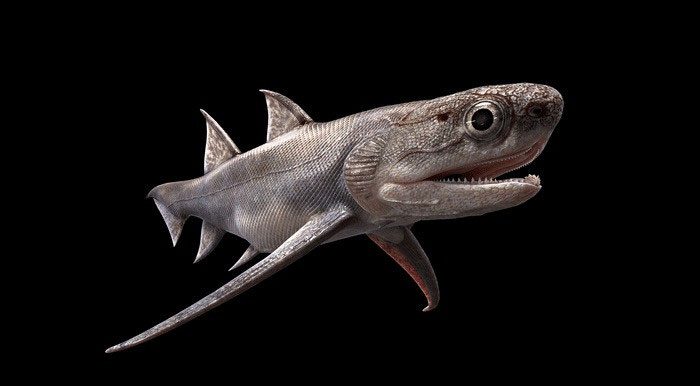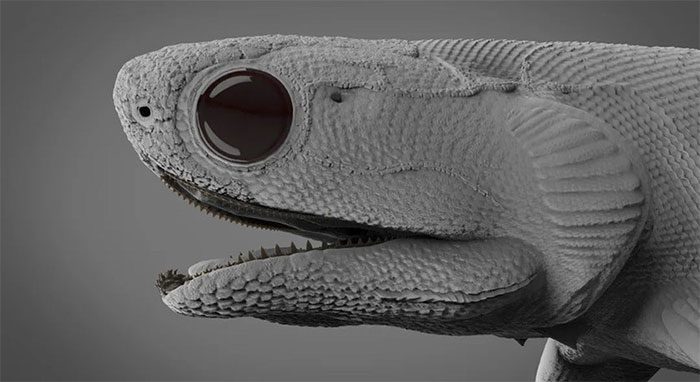According to Nature magazine, Chinese scientists have discovered a fossil fish that emerged over 400 million years ago, characterized by its remarkably dangerous features.
Today, most vertebrate animals have teeth, but from a paleontological perspective, this is a relatively recent evolutionary acquisition, appearing just over 400 million years ago. Chinese scientists have been fortunate to uncover a fossil fish from that era, possibly the first “toothed fish” on Earth, which bears a striking resemblance to modern sharks.

A new fish species, although it may not appear threatening, was a dangerous predator by the standards of its time.
Before the emergence of teeth and jaws, ancient vertebrates scavenged through soft sediment layers, filtering out small living organisms. Without teeth, they could only inadvertently suck in medium-sized crustaceans, worms, or smaller relatives into their mouths.
However, around 425 million years ago, an evolutionary innovation occurred among primitive fish species, determining the future development of vertebrates. In some gill arches without jaws, which initially supported the respiratory system, a shift occurred, transforming them into the first jaws.
The “toothed fish” fossil from China may be the oldest jawed ancestor of modern toothed fish
The first jawed vertebrates appeared on Earth in the early Silurian period, and these fish-like creatures could be the ancestors of all modern land vertebrates.
During this time, the first true teeth also emerged. There are several hypotheses regarding the origin of teeth, including development from fish scales or the formation of gill rakers, but ultimately, teeth and jaws evolved into a unique apparatus for attacking and holding prey.
Now, Chinese scientists have described the oldest toothed fish: a new species named Qianodus dupis, or double Qianodus, which lived approximately 443-419 million years ago.
The fossils were discovered in 2019 in Guizhou Province, southern China. On the jaw of this fossil fish, both the anterior and posterior parts possess long, sharp teeth. These teeth are at least 14 million years older than any other teeth discovered by paleontologists.

The jaw’s anterior and posterior sections of the fossil fish feature long, sharp teeth.
The emergence of teeth in vertebrates led to a biodiversity explosion. Scientists believe that many species with sharp-toothed jaws swam in ancient seas, capable of biting and tearing apart prey.
Furthermore, scientists speculate that ancient fish were not jawless; in fact, fish with sharp teeth appeared as early as 419 million years ago, at the beginning of the Devonian period.
It is also noted that ancient bony and cartilaginous fish reached an unprecedented diversity, marking this time as the “Age of Fishes.”





















































